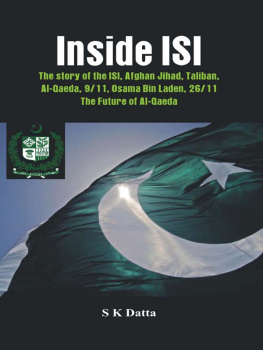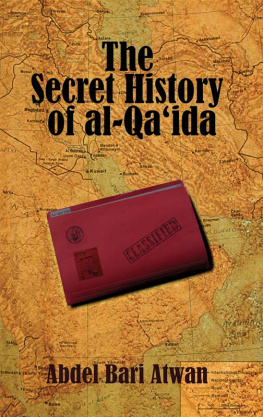
INSIDE AL-SHABAAB
HARUN MARUF and DAN JOSEPH
INSIDE AL-SHABAAB
The Secret History of Al-Qaedas Most Powerful Ally
Foreword by Christopher Anzalone
Indiana University Press
This book is a publication of
Indiana University Press
Office of Scholarly Publishing
Herman B Wells Library 350
1320 East 10th Street
Bloomington, Indiana 47405 USA
iupress.indiana.edu
2018 by Dan Joseph and Harun Maruf
All rights reserved
No part of this book may be reproduced or utilized in any form or by any means, electronic or mechanical, including photocopying and recording, or by any information storage and retrieval system, without permission in writing from the publisher.
Manufactured in the United States of America
Library of Congress
Cataloging-in-Publication Data
Names: Maruf, Harun, author. | Joseph, Dan (Journalist), author.
Title: Inside al-Shabaab : the secret history of al-Qaedas most powerful ally / Harun Maruf and Dan Joseph ; Foreword by Christopher Anzalone.
Description: Bloomington, Indiana : Indiana University Press, 2018. | Includes bibliographical references and index. | Description based on print version record and CIP data provided by publisher; resource not viewed.
Identifiers: LCCN 2018019388 (print) | LCCN 2018032045 (ebook) | ISBN 9780253037510 (e-book) | ISBN 9780253037480 (cl : alk. paper) | ISBN 9780253037497 (pb : alk. paper)
Subjects: LCSH: Shabaab (Organization)| TerrorismSomalia. | InsurgencySomalia. | Islam and politicsSomalia. | SomaliaPolitics and government1991
Classification: LCC HV6433.S582 (ebook) | LCC HV6433.S582 S53 2018 (print) | DDC 303.625096773dc23
LC record available at https://lccn.loc.gov/2018019388
1 2 3 4 523 22 21 20 19 18
CONTENTS
by Christopher Anzalone
FOREWORD
Christopher Anzalone
BEFORE THE RISE OF THE Islamic State and its pretensions as the new caliphate, Al-Shabaab ran a multitiered governing administration over vast swaths of central and southern Somalia, threatening the very existence of Somalias internationally recognized government. The militant organization recruited hundreds of foreign fighters from North America, Europe, the Middle East, and sub-Saharan Africa and established itself as a key regional ally and, later, affiliate of Al-Qaeda. Through its civil and political administrations, Al-Shabaab collected taxes and extorted protection money from locals, made alliances with businessmen engaged in the illegal charcoal trade, ran Sharia courts, and imposed a harsh form of law and order through its Hisbah police force. The United States, European Union, and Somalias African neighbors had good reason to be alarmed.
Indeed, Al-Shabaab was a pioneer in jihadi-insurgent governance, building itself from the ashes of the Islamic Courts Union following the December 2006 Ethiopian invasion and ensuring its primacy over Somalias insurgency through the ruthless use of coercion and outright violence. From its setup of a robust machinery for territorial control to its use of public events like communal prayers and outdoor executions, Al-Shabaab blazed a path for Sunni militants that would later be built on and scaled up massively by the Islamic State. The Somali jihadi group was also a trailblazer in the use of media, establishing a strong presence on Twitter and other social media platforms, and running a multilingual foreign propaganda campaign along with a domestic messaging operation aimed at Somalis. Most recently, Al-Shabaab deployed its media tools in the run-up to the 2017 Kenyan elections, releasing a string of propaganda videos in English, Swahili, Somali, Cushtic, and other regional languages.
Al-Shabaab represents a hybrid form of militant political Islam that is transnational in its ambitions while remaining, thus far, primarily local and regional in its core strategic operations. Although many analysts have predicted that the groups internal divisions and clashing personalities would result in an organizational split, Al-Shabaab has weathered leadership decapitation by US drone strikes and bouts of severe internal discord and infighting that claimed the lives or forced the flight of several of its founding leaders, as well as a sustained challenge from Islamic State. Despite suffering significant territorial, personnel, material, and financial losses since 2011, the group today remains a capable and resilient insurgent force. The presence of more than twenty thousand African Union troops in Somalia has not impeded the militants ability to attack targets in that country or in Kenya, where Al-Shabaab has set up a network of cells and regularly conducts hit-and-run attacks on police and military targets.
Harun Maruf and Dan Joseph bring their years of experience in reporting on African politics and affairs for Voice of America to tell the story of the founding, rise, decline, and rebound of Al-Shabaab. Utilizing an array of sources, including interviews with Somali politicians and government officials, current and former insurgents, and Somali Islamists from Al-Shabaab, its predecessor Al-Itihad, and its onetime partner Hizbul Islam, Maruf and Joseph document in fascinating and extensive detail how the founding cadre of Al-Shabaab met and formed what would become one of the most formidable jihadi organizations in modern history, which would include the former ice cream server and US-educated university student Ibrahim al-Afghani, the rigid and slightly built Afghanistan-trained commander Aden Hashi Farah Ayrow, and the utterly ruthless emir of the group, Ahmed Godane.
Written with the flair and engaging prose of an action novel but with keen attention to sourcing and detail, the book documents Al-Shabaabs evolution from its days as the most radical faction within the military wing of the Islamic Courts Union to the bitter street fighting that wracked Mogadishu in 2009 and 2010, when it threatened the survival of Somalias fledgling federal government. It also covers the transition back to asymmetric warfare following the groups loss of major urban centers such as Mogadishu, Baidoa, and Kismayo. Maruf and Joseph uncover new information about the organizations inner workings and divisions and take readers through key events in its history, such as the meeting in September 2014 to replace Godane after he was killed in a US drone missile strike and the groups heavy crackdown on Islamic State sympathizers and defectors.
The result is a gripping narrative account of the history and evolution of one of the deadliest and most successful jihadi organizations not only in Africa but in the world. The book, which is accessible to general readers while also containing new insights for scholars and other specialists, is a must-read for those interested in global affairs, contemporary conflicts, African politics, and political Islam.
CHRISTOPHER ANZALONE is a research fellow with the International Security Program at the Belfer Center for Science and International Affairs at Harvard Universitys John F. Kennedy School of Government and a PhD candidate (ABD) at McGill University. He has written extensively on political Islam, jihadist movements and organizations including Al-Shabaab, Shiite Islam, and Islamic visual cultures and new media.
SOURCES AND ACKNOWLEDGMENTS
WE WROTE THIS BOOK TO lift the veil on one of the most secretive, deadly militant organizations in the world. Several books and hundreds of articles have been written about Al-Shabaab or its role in Somalias long-running cycle of violence. Many of these works are informative and insightful. But as reporters and editors who cover the events of the country on a daily basis, we felt uniquely well-positioned to write a detailed, comprehensive history of the group.
Next page









